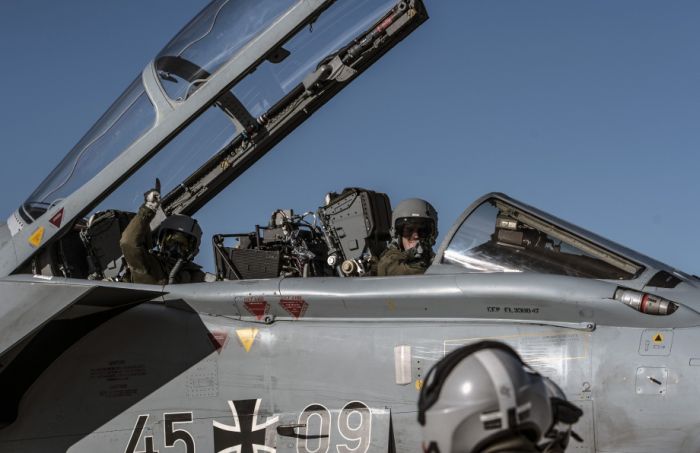|
|
Panavia Tornado Combat Aircraft
|
Britain considered the selection of Rolls-Royce to develop the advanced engine for the MRCA to be essential, and was strongly opposed to adopting an engine from an American manufacturer, to the point where the UK might have withdrawn over the issue. In September 1969, Rolls-Royce's RB 199 engine was selected to power the MRCA. One advantage over the US competition was that a technology transfer between the partner nations had been agreed; the engine was to be developed and manufactured by a joint company, Turbo-Union. The programme was delayed by Rolls-Royce's entry into receivership in 1971, the nature of the multinational collaboration process helped avoid major disruption of the Tornado programme. Research from the supersonic airliner Concorde contributed to the development and final design of the RB.199 and of the engine control units.
To provide the desired performance several features were used in the RB.199. To operate efficiently across a wide range of conditions and speeds up to Mach 2, the RB.199 and several other engines make use of variable intake ramps to control the air flow. The hydraulic system is pressurised by syphoning power from both or either operational engine; the hydraulics are completely contained within the airframe rather than integrating with the engine to improve safety and maintainability. In case of double-engine, or double-generator, failure, the Tornado has a single-use battery capable of operating the fuel pump and hydraulics for up to 13 minutes.
Relatively rare amongst fighter aircraft, the RB.199 is fitted with thrust reversers to decrease the distance required to safely land. To fully deploy the thrust reverser during landings, the yaw damper is connected to the steering of the nosewheel to provide greater stability.
In August 1974, the first RB.199 powered flight of a prototype Tornado occurred; the engine completed its qualification tests in late 1978. The final production standard engine met both reliability and performance standards, though the development cost had been higher than predicted, in part due to the ambitious performance requirements. At the time of the Tornado's introduction to service, the turbine blades of the engine suffered from a shorter life span than desired, which was rectified by the implementation of design revisions upon early-production engines. Several uprated engines were developed and used on both the majority of Tornado ADVs and Germany's Tornado ECRs.
|
|









